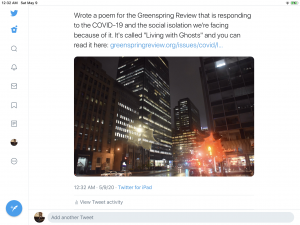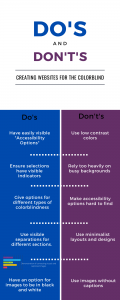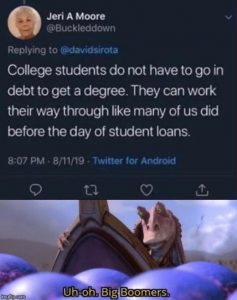https://drive.google.com/file/d/188Hx4XX1-KodINpAd4y6gy67UtKo5UTa/view?usp=drivesdk
Hello ladies, gentlemen, and anything in between or beyond. I’d like to take some time today to do a quick rhetorical analysis of The Paris Review’s website. To summarize my thoughts on the site, I’d say that the site has a simple, easy to navigate design and aesthetic, but it does feel a bit cramped.
The observant eye can tell a lot about a website from a cursory overview. For example, the Paris Review primarily is marketed towards people with ‘refined’ taste. These are upper-middle or upper class individuals who have a healthy appreciation for the arts. Their website is designed to showcase text-based pieces like short stories, interviews, or poems, but also has pages for articles and photographs, as well as full sections for podcasts and videos. There is also the page designed to sell print issues of the magazine, which are put out seasonally.
The page for text content, we’ll use the poetry one for this, is pretty straightforward. The entire site’s colors are simple and clean, white background with black text, and pink for some boxes that serve as buttons or for indicators. It provides a nice contrast to the white, and lets us see that we’re looking at poetry from the 2010s, for example. The font is simple, dignified, and harkens back to the Review’s appreciation of the classics. However, the drawback is that the screen feels too cluttered, because the sidebar which stays at the top of the screen is right next to the scrolling list of content. The shifting element appears, sometimes, in other places of the screen before snapping back to where it should be, and feels hectic to navigate and a tad sloppy. Plus, there is an excess of white space on the right side of the screen, which accentuates the problem.
Looking at a piece of content, we see the same principles: simple, classic, easy to read, but it makes better use of the space. The layout has shifted, placing the content on the left side of the page, while putting an advertisement for the print edition of the magazine on the right. The bright pink of the “Subscribe to Keep Reading” advertisement in the middle of the page signals the appropriate shift to the audience.
Navigation is pretty easy and self explanatory, with drop down menus in the ‘review’ section to take to the different pages within said section. The ‘Video’ and ‘Podcast’ sections are even simpler to navigate, having only one page within them.
Both pages look mostly the same, the layout keeping the sub-categories on the left, and the main content on the right. The biggest issue with this is that on both the podcast and video pages, there exists very little negative space, the thumbnails have tiny gaps in between them, and are placed across most of the page. Sometimes when navigating these pages, the sidebar that’s just a placeholder for the videos will disappear and the video tiles will settle to four across before correcting back to three across when the logo moves down.
Overall, the main content portions of this website are pretty easy to read and navigate. Sometimes, the use of space could be optimized better, and having a sidebar that stays static while the rest of the website scrolls would be a somewhat useful tool, but a smooth navigational experience should come first.
Works Cited:
Ball, Cheryl E., et al. Writer/Designer: A Guide to Making Multimodal Projects. “Chapter 1: What Are Multimodal Projects?” Second Edition. Bedford/St. Martin’s, 2018. Print.


